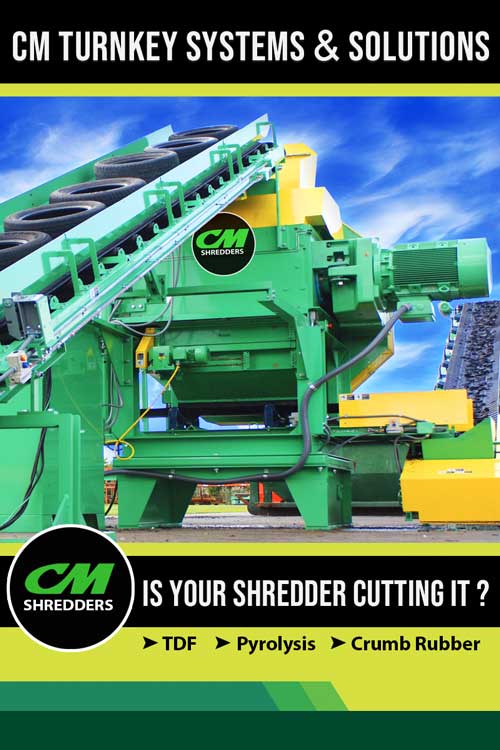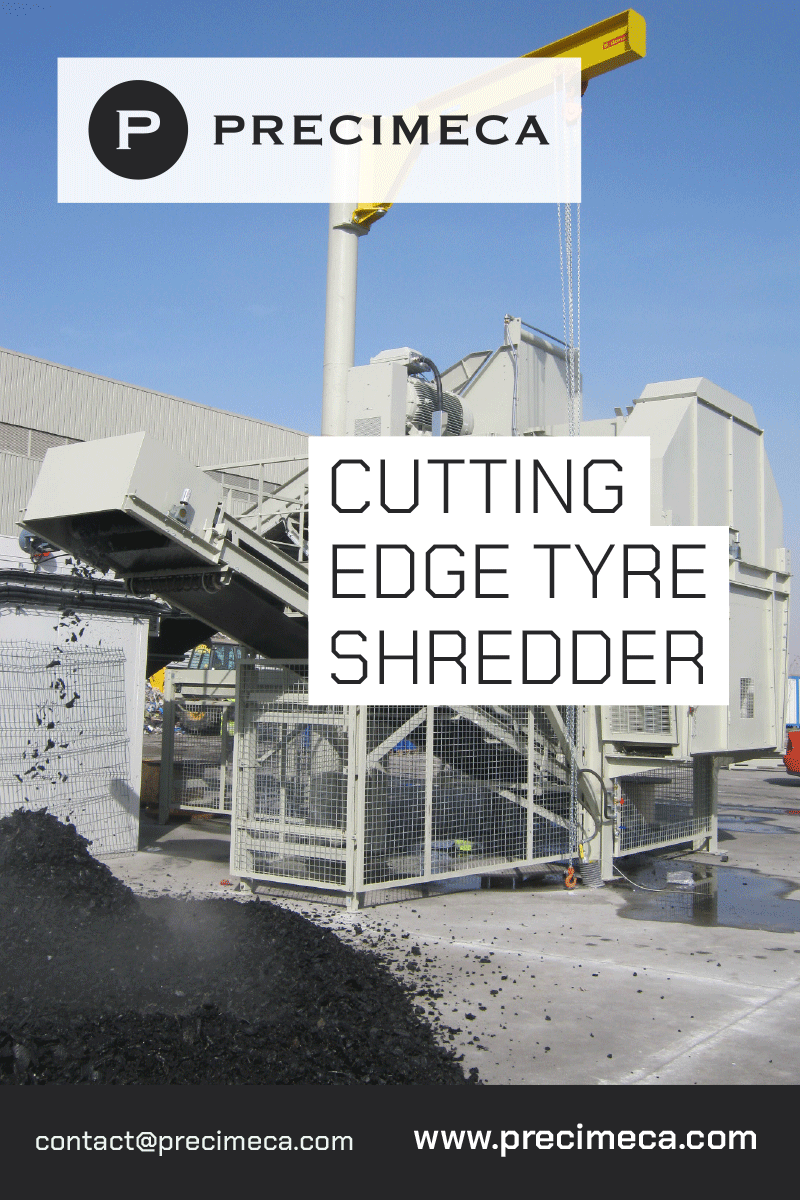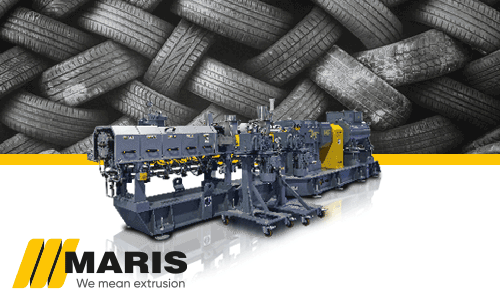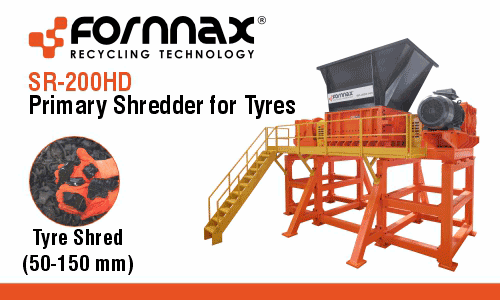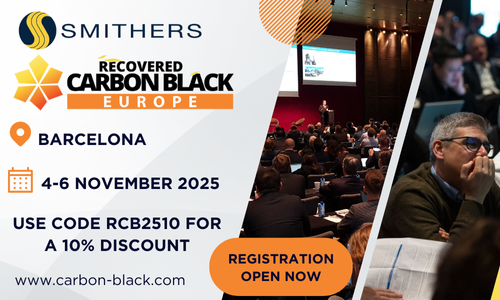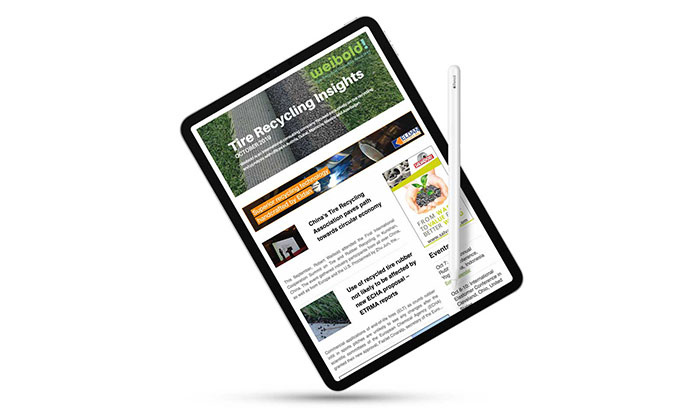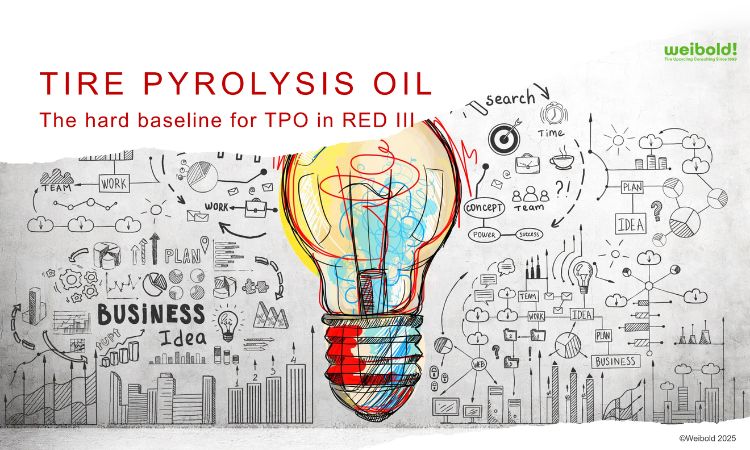Weibold Academy: Recovered carbon black (rCB) – strategic pathway to sustainable material integration
Weibold Academy article series discusses periodically the practical developments and scientific research findings in the end-of-life tire (ELT) recycling and pyrolysis industry.
These articles are reviews by Claus Lamer – the senior pyrolysis consultant at Weibold. One of the goals of the review is to give entrepreneurs in this industry, project initiators, investors and the public, a better insight into a rapidly growing circular economy. At the same time, this article series should also be a stimulus for discussion.
For completeness, we would like to emphasize that these articles are no legal advice from Weibold or the author. Please refer to the responsible authorities and specialist lawyers for legally binding statements.
Embracing the Potential of Recovered Carbon Black
Recovered carbon black (rCB) represents a transformative opportunity in the transition toward sustainable industrial materials. Derived from the pyrolysis of end-of-life tires (ELT), rCB offers a compelling alternative to virgin carbon black (vCB), significantly reducing environmental impacts while supporting circular economy principles. As industries seek to reduce their carbon footprint, enhance resource efficiency, and increase the use of recycled inputs, rCB has emerged as a commercially viable and environmentally responsible material.
The technological readiness of rCB has improved markedly in recent years, with several pyrolysis technologies operating at or near Technology Readiness Level (TRL) 9, indicating full-scale demonstration in operational environments [1]. In parallel, rCB manufacturing has progressed through the Manufacturing Readiness Level (MRL) framework, with industrial players investing in quality control, standardization, and scalability to ensure reliable supply and consistent product performance [2].
Far from being a niche innovation, rCB is now embraced by major tire and rubber product manufacturers who recognize its potential to support their sustainability objectives without compromising performance. Studies have demonstrated that, with proper optimization, rCB can partially or fully replace vCB in various rubber compounds while maintaining mechanical integrity and processability [3].
Moreover, rCB offers a unique blend of environmental, economic, and operational benefits. Its adoption reduces reliance on fossil-based feedstocks, diverts waste from landfills, and opens avenues for innovation in product development. By fostering partnerships between recyclers, compounders, and end-users, rCB is increasingly viewed not as a compromise but as a high-value material that supports both business and environmental goals.
Environmental and Lifecycle Benefits of rCB
Environmental Footprint Comparison
Virgin carbon black production is energy-intensive, emitting approximately 2.77 kg CO₂-equivalent per kilogram of product [4]. In contrast, recovered carbon black, produced from the thermal decomposition of used tires, yields a significantly lower environmental footprint. A life-cycle assessment conducted by the IVL Swedish Environmental Research Institute found that rCB production results in a 79–84% reduction in CO₂ emissions compared to vCB [5]. This means avoiding 1.43–2.00 kg of CO₂ emissions for every kilogram of rCB utilized.
Circular Economy Integration
Beyond carbon savings, rCB production aligns with circular economy principles by reintroducing valuable carbon-based materials into the production cycle. Tires, typically seen as challenging waste streams, are thus transformed into sources of valuable raw material. This conserves natural resources and reduces the environmental burden associated with tire disposal, including landfilling and incineration [6].
Energy Efficiency and Resource Optimization
The pyrolysis process used to produce rCB operates at lower temperatures (typically 400–700°C) than vCB production (often 1200–1800°C) and recycles process gases and oils to provide internal energy, improving overall energy efficiency [7]. Additionally, as co-products such as pyrolysis oil and steel are recovered and utilized, the net environmental benefit increases further, positioning rCB production as a model for integrated resource recovery.
Mitigation of Hazardous Emissions
While rCB may contain trace residues such as polycyclic aromatic hydrocarbons (PAHs), modern post-processing techniques, such as thermal treatment and solvent extraction, effectively reduce these to safe levels for consumer and industrial use [8]. Ensuring material safety and consistent quality is a critical focus in rCB processing, supported by ongoing industry and regulatory efforts.
Regulatory Framework and Standardization of rCB
ASTM Definitions and Classification
The standardization of rCB has made significant strides, beginning with ASTM D8178-18, which formally defines rCB as the solid product obtained from the thermal decomposition of rubber that originally contained carbon black [9]. This definition distinguishes raw pyrolysis char and processed rCB, ensuring clarity in material specifications.
Emerging Technical Standards
ASTM Committee D36 on Recovered Carbon Black is developing standards to support rCB commercialization. For example, ASTM D8582-24 provides a standard rubber formulation for benchmarking rCB performance, enabling consistent quality assessment across producers [10]. Additional standards focus on test methods, nomenclature, and environmental aspects, ensuring that rCB meets performance and safety expectations.
Compliance with Environmental and Safety Regulations
In regions like the EU, rCB must fulfill end-of-waste criteria under REACH to be marketed as a product. This requires demonstrating that rCB is safe, effective, and suitable for intended uses [11]. Similar regulatory scrutiny exists in other jurisdictions, with requirements to control PAH levels, heavy metals, and other potential contaminants.
Product Requalification and Industry Adoption
Although regulatory frameworks permit using recycled materials, products incorporating rCB must still undergo full requalification to demonstrate compliance with performance standards. Tire manufacturers, for example, conduct comprehensive tests—including rolling resistance, wear, and durability—before approving rCB-containing formulations [3]. While this process can be time-consuming, industry experience indicates that moderate substitution levels (e.g., 10–20%) can be achieved without compromising safety or functionality.
Conclusion
Recovered carbon black presents an exceptional opportunity for industries to align performance goals with sustainability objectives. By significantly lowering greenhouse gas emissions, supporting waste reduction, and enabling circular material flows, rCB stands out as a key innovation in green materials science. The steady progress in technical validation, standardization, and regulatory recognition further reinforces its role as a viable and responsible alternative to virgin carbon black. With continued collaboration across the value chain, rCB is poised to become an indispensable component of the sustainable manufacturing landscape.
References
- Weibold. (2024). Weibold Academy: How to keep improving ELT pyrolysis processes. Retrieved from Weibold Academy, September 2024
- Smithers. (2023). Alternative and Recycled Carbon Blacks: A Practical Route to Market. Retrieved from https://www.smithers.com/rubber
- Božeková, S., Ondrušová, D., Pajtášová, M., & Klepka, T. (2023). Effect of alternative carbon-based filler on rubber compounds properties. Polimery, 68(12), 787–794. https://doi.org/10.14314/polimery.2023.11.6
- Birla Carbon. (2024). FY2024 Carbon Footprint Statement for Carbon Black. Retrieved from https://www.birlacarbon.com
- IVL Swedish Environmental Research Institute. (2021). Life Cycle Assessment of Recovered Carbon Black. Retrieved from https://www.ivl.se
- European Tyre & Rubber Manufacturers’ Association (ETRMA). (2023). End-of-life tyre management report. Retrieved from https://www.etrma.org
- Costa, S. M. R., Fowler, D., Carreira, G. A., & Portugal, I. (2022). Production and upgrading of recovered carbon black from the pyrolysis of end-of-life tires. Materials, 15(6), 2030. https://doi.org/10.3390/ma15062030
- Rikmann, E., Mäeorg, U., & Liiv, J. (2024). Recycling of low-quality carbon black produced by tire pyrolysis. Applied Sciences, 14(5), 2192. https://doi.org/10.3390/app14052192
- ASTM International. (2018). ASTM D8178-18: Standard Terminology Relating to Recovered Carbon Black (rCB). https://www.astm.org/d8178-18.html
- ASTM International. (2024). ASTM D8582-24: Standard Practice for Evaluating Recovered Carbon Black in Rubber Compounds. https://www.astm.org/d8582-24.html
- European Chemicals Agency (ECHA). (2022). Guidance on waste and recovered substances under REACH. https://echa.europa.eu
Weibold is an international consulting company specializing exclusively in end-of-life tire recycling and pyrolysis. Since 1999, we have helped companies grow and build profitable businesses.

